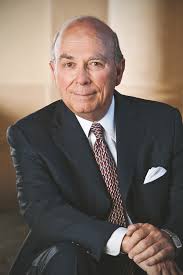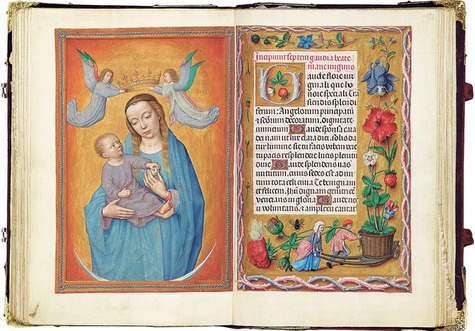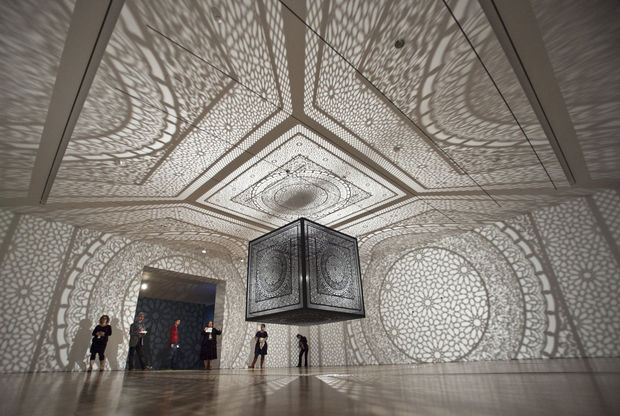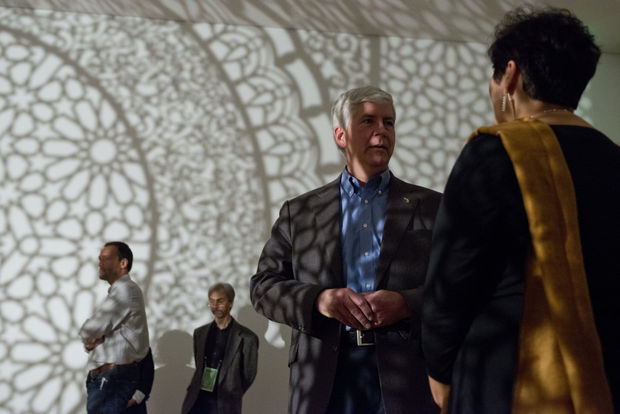You may not be avid readers of the business section of The New York Times, so you may have missed an article in Sunday’s paper headlined The Feud That’s Shaking Gallery Walls. In it, Ron Perelman says, “Art is such a beautiful thing. But it’s been sullied by an ugly business. It needs to be fixed.â€
 Do you find it strange that a man who’s been buying and selling art for a very long time suddenly decides he’s had enough or that he was had? After all, he willingly entered into the transaction he has now gone to court to protest.
Do you find it strange that a man who’s been buying and selling art for a very long time suddenly decides he’s had enough or that he was had? After all, he willingly entered into the transaction he has now gone to court to protest.
Here’s the gist: One day in 2011, Perelman wanted to buy a Cy Twombly painting called Leaving Paphos Ringed With Waves, which happened to hang in Larry Gagosian’s Madison Avenue gallery. Gagosian told him it would cost $8 million; Perelman offered $6 million. There was no deal. (The two had been doing business together for years; Perelman “had bought or sold nearly 200 works of art through Mr. Gagosian,”  the piece says.)
Perelman still wanted the picture so he went back “with another offer” (undisclosed). Gagosian said it’s no longer available, but that he could get it back for him at $11.5 million. Meantime, the Mugrabi family had bought it for $7.25 million “paying in part with their ownership stake in artwork also co-owned by Mr. Gagosian.”
Perelman Perelman ultimately buys it for $10.5 million. So the Mugrabis made “a quick $2 million profit and Mr. Gagosian a $1 million commission.” (I know the numbers don’t quite add up, but I’m quoting the article, which by the way makes no mention of sales tax, which could have been, no, should have been, substantial.)
Then they both sued: Gagosian said Perelman never paid the $10.5 million, and in part offered art that wasn’t wanted or worth what he had claimed. Perelman said the whole transaction with the Mugrabis was a “sham,” serving only to get more money out of him.
Gagosian has withdrawn his suit, but Perelman has spent some $3 million pressing his.
…his desire to shine a light on the market went far beyond his Twombly purchase….His lawyers have sent subpoenas to some of the biggest players in the business and sent art experts to galleries and dealers and even to visit artists. He subpoenaed members of the Mugrabi family. …He has also submitted subpoenas to the auction houses Sotheby’s and Phillips, according to court filings.
He’s even enlisted a former F.B.I. agent who is well versed in the art business to interview big collectors and dealers, according to two gallery owners. Major artists close to Mr. Gagosian have also been questioned, these gallerists say.
Neither party is sympathetic in this case. But Perelman was no babe in the woods here; he entered into the Twombly transaction of his own free will. One can’t help but think that he is playing some sort of grudge match against Gagosian.
And sadly, the courts have to waste  time on this.
I’m all for more transparency in the art trade, but I don’t think this is the way to get it. Ron Perelman, carrying the torch for other people? Please. When has that ever happened before?
Photo Credit: Courtesy of Forbes





